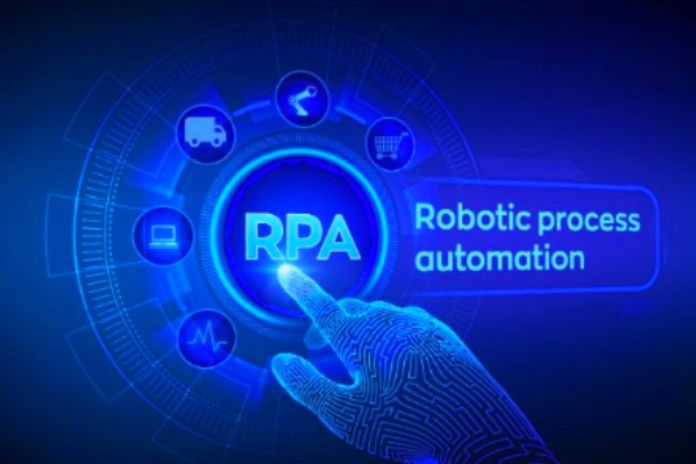According to a study carried out by Accenture, the application of RPA can reduce by up to 80% the time dedicated by the company to carry out activities previously performed manually.
But for the investment in technology to be justified, these automated tasks must be repeatable, scalable, and high volume.
When integrated with Cognitive Computing and Artificial Intelligence, RPA makes service delivery more agile, efficient, and productive, significantly reducing operational costs.
This means that if your business requires a large load of people and several shifts to solve a repetitive process, Robotic Process Automation can take over this function and prevent you from assuming some labor risks.
By controlling and quantifying each execution performed, it is also simple to compare expenses before and after the application of RPA, making it easier to calculate the return on investment.
See below the main benefits of using RPA in your company!
Decreased errors are an automated method; all possible human errors in processing information are eliminated: the robot has no errors in receiving, reading, understanding, typing, or forgetting. It can perform these operational tasks around the clock, 24 hours a day, seven days a week.
The error is peculiar to the human being; we are not instruments programmed to perform an activity repetitively without margin for error. But you can be sure what systems in Robotic Process Automation are.
The robots are recommended for this purpose; for this reason, they were designed to work with complete efficiency and precision.
This reality reduces the opportunities for errors in the process, being of great help in creating a more efficient and independent production compared to conventional production. Reducing failures helps to make your business image stronger and avoid financial losses.
Process Optimization
The service controlled and programmed by robots also helps to make procedures efficient, speeding up production and service. Not to mention that the environment becomes more efficient and productive.
Since RPA is self-sustaining, robots grow their repertoires along the way. This generates more confidence in the work and continuous improvement. It becomes more practical to allocate employees to other tasks that demand more human attention and personalization.
Cost Reduction
By assigning operational issues to the algorithms, it is possible to relocate employees who will perform other equally relevant activities, eliminating costs.
The reduction in the time to carry out activities also boosts productivity, representing a better cost-benefit ratio at the end of the process.
In addition, the cost of automating processes via RPA, as it is quick to deploy, is lower than other alternatives.
Additionally, by directly accessing the visual interface of the systems, RPA avoids spending on system integration, an essential part of an automation project.
Increased Customer Satisfaction
Implementing RPA in business processes cuts the administrative burden in half, improving customer service and customer satisfaction.
RPA solutions provide the consumer with a much more pleasant and practical user experience, as they considerably reduce the efforts of professionals to carry out their activities, raising their self-esteem.
Professionals Are More Focused On What Matters
By having routine activities done by the “robot” software, professionals can dedicate themselves to tasks that matter in their functions, which demand more personal skills and require intellect. Jobs that require innovation and creativity will have a significant impact on your business.
Improved Communication
As you already know, RPA can be used to manage customer communication and interactions.
It is essential to control the consumer’s contact calendar, presenting reminders as soon as it is time for professionals to monitor a specific process.
RPA can also send automated messages to the public about product promotions or new services. Improved levels of communication promote a greater understanding of customers.
Reduction Of TMA
Average Handle Time is critical, and RPA helps companies reduce it. The period required to solve a customer’s problems is fundamental for managing the service.
Delivering services over a considerable period is extremely important. With the use of RPA, the activities that a person would do are carried out quickly. In addition, consumers are contacted more effectively.
RPA can also assist the employee with large requests and current delays. Its use will considerably increase the productivity of the attendant team, allowing everyone to focus on the customer.
Facilitated And Well-Structured Analyzes
RPA acts as an expert performing well-structured and assertive analysis. Therefore, the solution can compile and interpret the information in real-time.
This way, managers get a robust database to have a complete view of what happens in each company process.
Greater Employee Motivation And Productivity
RPA can boost productivity by performing highly repetitive tasks among those with the highest turnover. Thus, employees can relieve the burden of monotonous activities and focus on critical processes. This way, employees are motivated, satisfied, and less likely to leave the company.
The retention rate is contrasting when comparing before and after RPA implementation. However, it is a long-term metric, as people’s reactions take time to form and manifest.
On the other hand, all you need to do to use it as an indicator of RPA profitability is ask employees to complete satisfaction surveys about their roles and workloads. Answers must be anonymous to ensure the integrity of the information entered, considering that employees will feel more comfortable being sincere when not identified.
It would help if you started your studies in the departments most affected by automation. The expectation is that the fewer repetitive manual tasks, the greater the satisfaction and engagement.
Integration With Other Tools And Systems
RPA provides integration with tools and systems, such as cloud applications, BPM ( Business Process Management), ERP ( Enterprise Resource Planning ), and others.
Integration brings disparate systems together and makes them work as one rather than a collection. Therefore, RPA implements quickly and offers an excellent, cost-effective solution.
Its competitive advantage comes from its structure, which allows it to implement the technology without changing the organization’s existing systems.
Also Read: What Are The Benefits Of Using RPA And AI Together?

